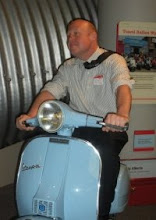In doing a simple search of “museums raise gate prices” it looks as though many museums have done an initial rate hike in early 2009 and many have since followed suit. For many this is met with mixed reaction. I think it is fair to say for most museums it costs far more than the price of admission to bring a person through the door in the first place, and for other places that are free its not an issue. But recently on an education list serve I saw a question regarding how to charge for a special exhibit, and weather or not to offer discounts to chaperons who also attend.
What to charge school groups is always touchy. In a perfect world we would have everything be free, and for those of us in education I think we fear razing prices, or charging what the “experience” is really worth as we see it our duty to perform it. But in the end I think that most museums are undercharging for school visits. Movie tickets for children range from $7-$12. A bottle of soda is almost $2. The latest toys are designed in clean environments and seldom are cheaper than $200. A Children’s meal of barely recognizable food is $4. So why are we charging students $4-$5 only to enter our institutions? Are we the equivalent of chicken parts or are we white meat? Is the experience we are providing at our institutions less exciting and engaging than the latest
I am not advocating hitting schools with high admissions prices, but I did have a recent wake up call when comparing programming costs with some other museums and with general opportunities for school groups. I think we need to be ok with charging adults who come. I think we need to be ok with charging at least what we pay our museum teachers an hour for the price of admissions to our museums. In many cases we may even be able to increase access to other areas of our museums, or try providing more pre-visit material or combine with distance learning programs.
I am using this time as an opportunity to ramp up the school visit experience with more hands on activities, and more expressly developed experiences linked to state standards, all while maintaining a sense of play and whimsy in what we have to offer. In the end I think my visitors will value me more because I valued myself first.
 image from ehow
image from ehow 

